We genuinely believe our garage doors are the best available. We want you to choose Teckentrup products with a clear understanding of what performance you can expect from our doors. What they can do and, often equally as important, what they can’t do. It can be frustrating to have an experience that has a “but I thought it would” moment, when a product does not live up to an expectation.
That’s why we’ve taken the time to put together this guide to the performance of our doors. We don’t make unsubstantiated claims about our products and believe our garage doors, at worst, match the best in the market for their quoted characteristics and often exceed. We want to be very clear as to the intended use, the performance and limitations of our products – the honesty page!
Jim Rodger,
Director
![]()

Click on a chapter below to jump straight to the section you need:
↑ Click here to go back to the top of the page!
CarTeck sectional, side hinged garage doors and personnel doors are designed to provide access to and from a garage space.
CarTeck sectional, side hinged garage doors and personnel doors are not front doors!
Front doors must be compliant to the British Standard for pedestrian doorsets BSEN14351-1. Garage doors must be compliant to the British standard for garage doors BSEN13241-1
As a garage doors’ primary function is to allow vehicular access and personnel access to a garage, they are designed to conform to different requirements when compared to a front door, which provides access to a living space.
It is important to note that the stated performance of our doors (made in the Declaration of Performance for CarTeck sectional garage doors, CarTeck side hinged garage doors and personnel doors as part of the requirement of the British Standard for garage doors) is lower than that required for a front door.
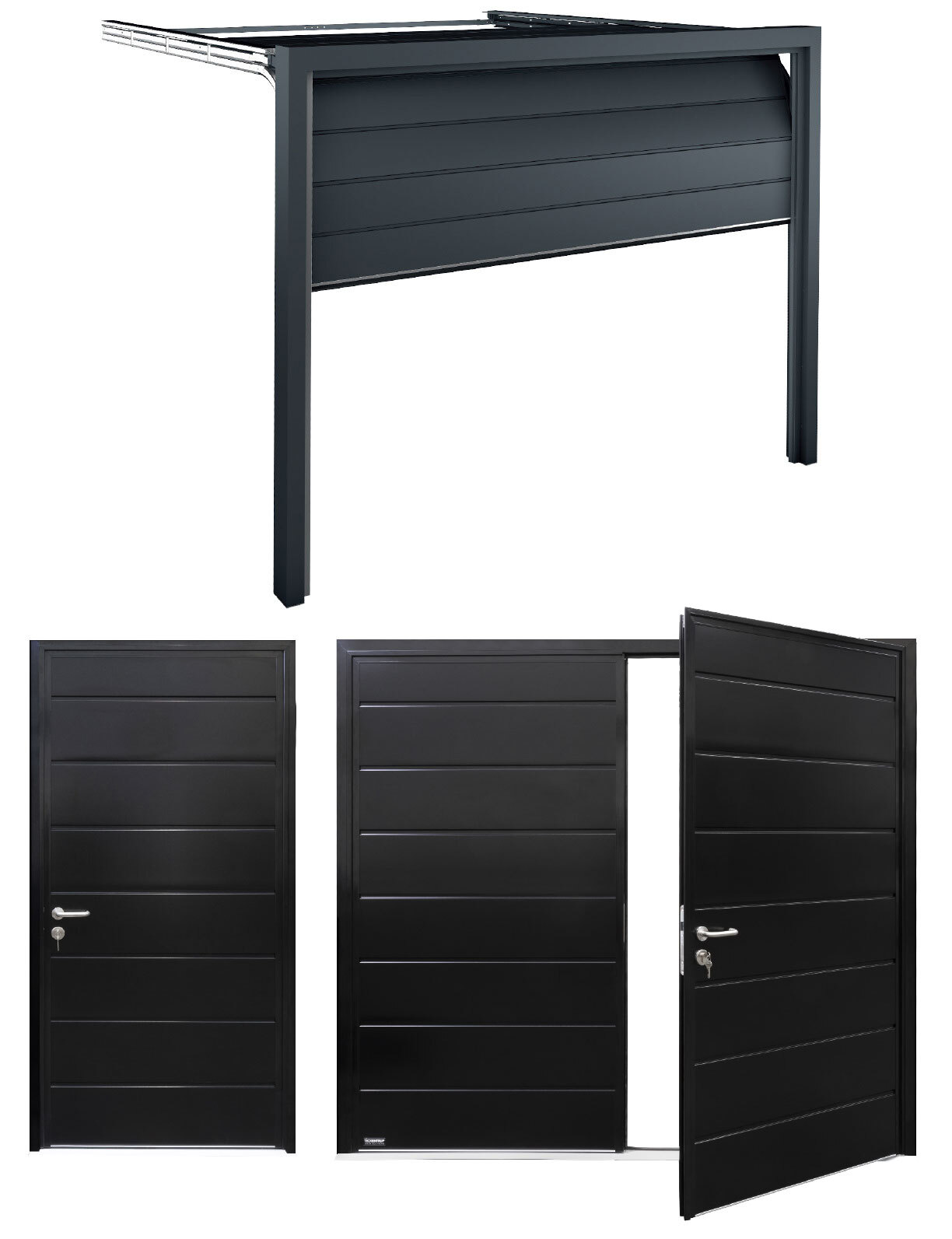

As an example, take ‘U’ values. Teckentrup sectional insulated doors, around 2500mm x 2125mm in size, will offer a ‘U’ value of 1.38 W/m2k, whereas insulated roller garage doors are circa 4.0 W/m2k - remember, the higher the number, the poorer the performance.
The front door of your house will typically have a ‘U’ value less than 1 W/m2K… …but you can’t get a vehicle through a front door! Most garages do not require the performance of a front door as they are unheated spaces designed to store a vehicle.
Below are the key points that you must accept regarding the performance of our doors. It’s important that you take them on-board, as we want to be as transparent and honest about what you can reasonably expect from the products we sell.
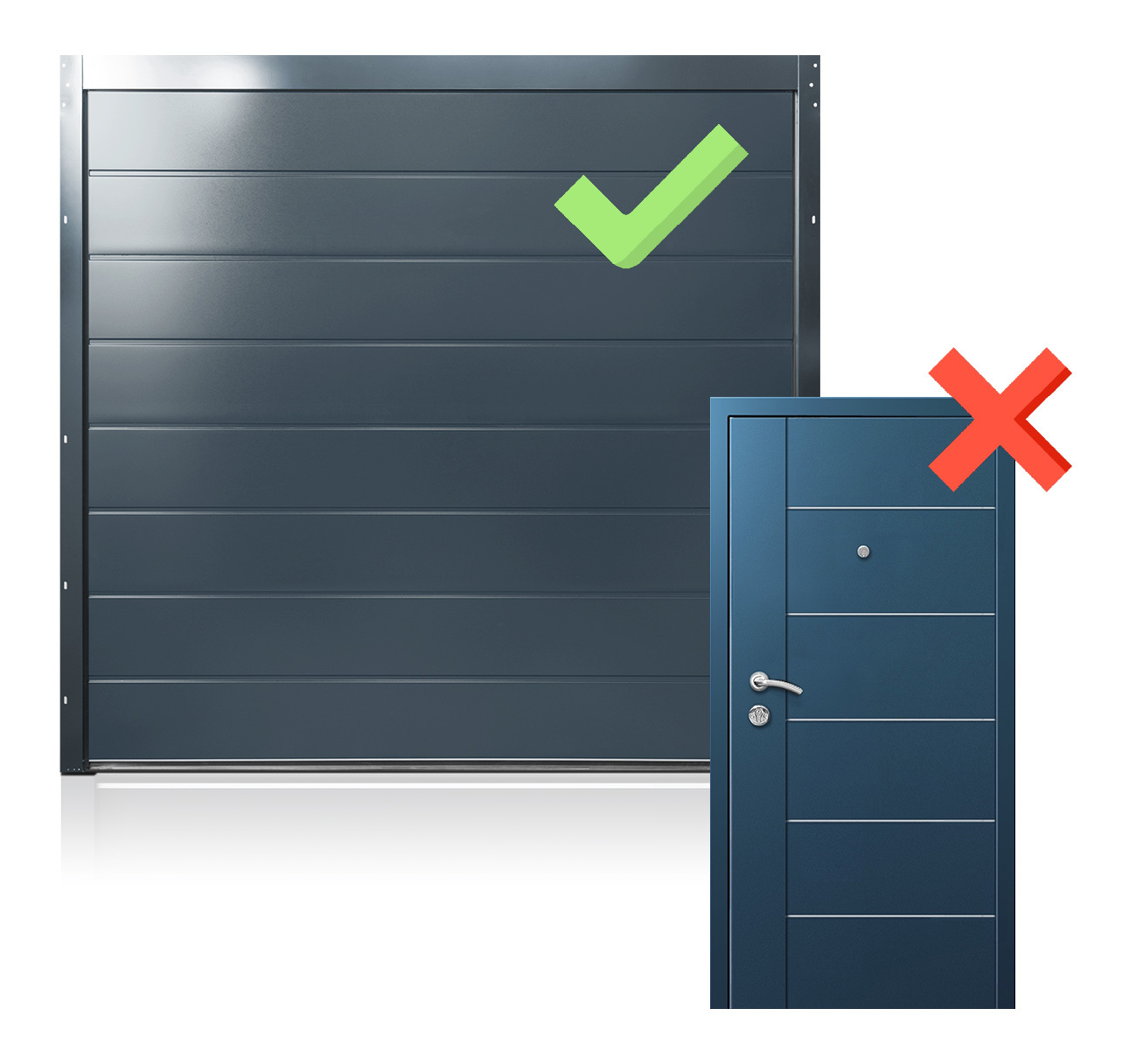
It is important to remember that the opening into which the door is fitted must be in good condition. If the threshold, walls and lintel are uneven, broken or sloping, a new door will not fix this! Talk to your garage door specialist about any remedial work that may be necessary to the opening to ensure the best possible installation.
For CarTeck insulated sectional garage door installs on a sloping threshold, we have a solution!
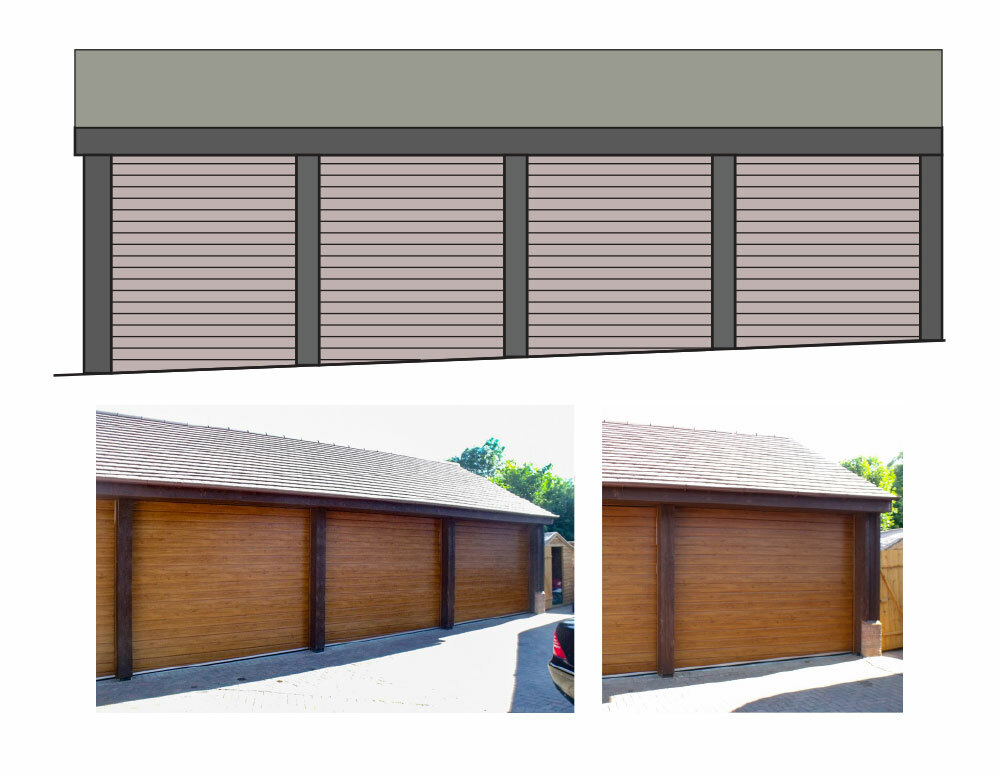
↑ Click here to go back to the top of the page!
Our doors do a pretty good job of keeping the outside out and the inside in, but the nature of how they are made and how they operate means they are not hermetically - sealed. Take a look at what you can expect and how to get the best from your door.
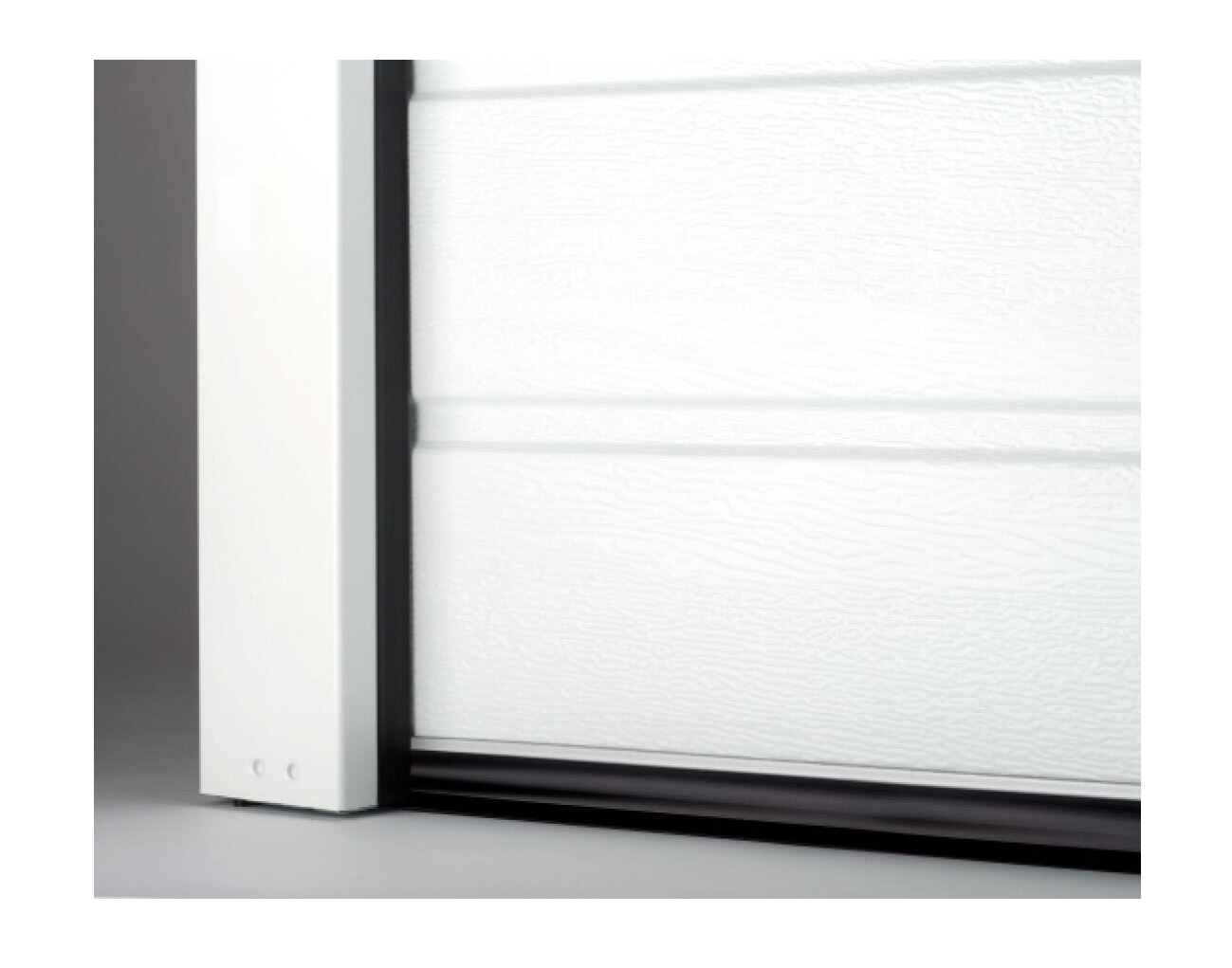

When the door is closed, light ingress is to be expected – when it’s daylight outside and your lights are off, your garage will not be pitch black. The door seals are reasonably effective at stopping light passage but will not eliminate it. This will be more pronounced generally where seals meet, on seals that are between moving sections and particularly in corners.
Where light can get in, so can a draft. With a well installed door that has seals in good condition, drafts will be minimal, but the door is not sealed completely.
Under normal weather conditions water ingress should also be minimal, but you may experience some ingress, as with light and drafts, where seals meet and in corners. Under extreme conditions, driving rain and high winds, ingress can be expected to increase. Never jet wash a door, not only may it damage the finish, but it can force open seals causing water ingress.
The threshold is also a point where water ingress may occur. Gaps between the bottom seal and the threshold arising from an uneven threshold or (in the case of side hinged garage doors) a poorly fitted threshold will allow water ingress. If rain runoff can collect and pool at the bottom of a door instead of draining away from the door into a drainage channel, water ingress may occur. Fitting the door onto a stepped rebate behind a drainage channel is often effective in greatly reducing the likelihood of water ingress.
For an additional layer of protection against water ingress, draughts, leaves and dust, we offer an optional floor sea kit for sectional doors. Talk to your garage door installer about your options.
Installed correctly, the standard 3-part threshold is an effective barrier against water ingress. However, we do offer a number of threshold options, including a 4 sided frame threshold, which may be better suited to your opening. Talk to your garage door installer about the best solution for you.
↑ Click here to go back to the top of the page!
If you have a detached unheated garage, thermal performance is rarely an issue. If your garage is integrated into your home, perhaps under a bedroom, or you use your garage as a home office or gym, then its energy-saving capability will be an important consideration.
The video below demonstrates how 'U' values work and how much money you’ll save on heating by fitting an insulated CarTeck garage door compared to other garage door types on the market… It’s a surprisingly significant amount!
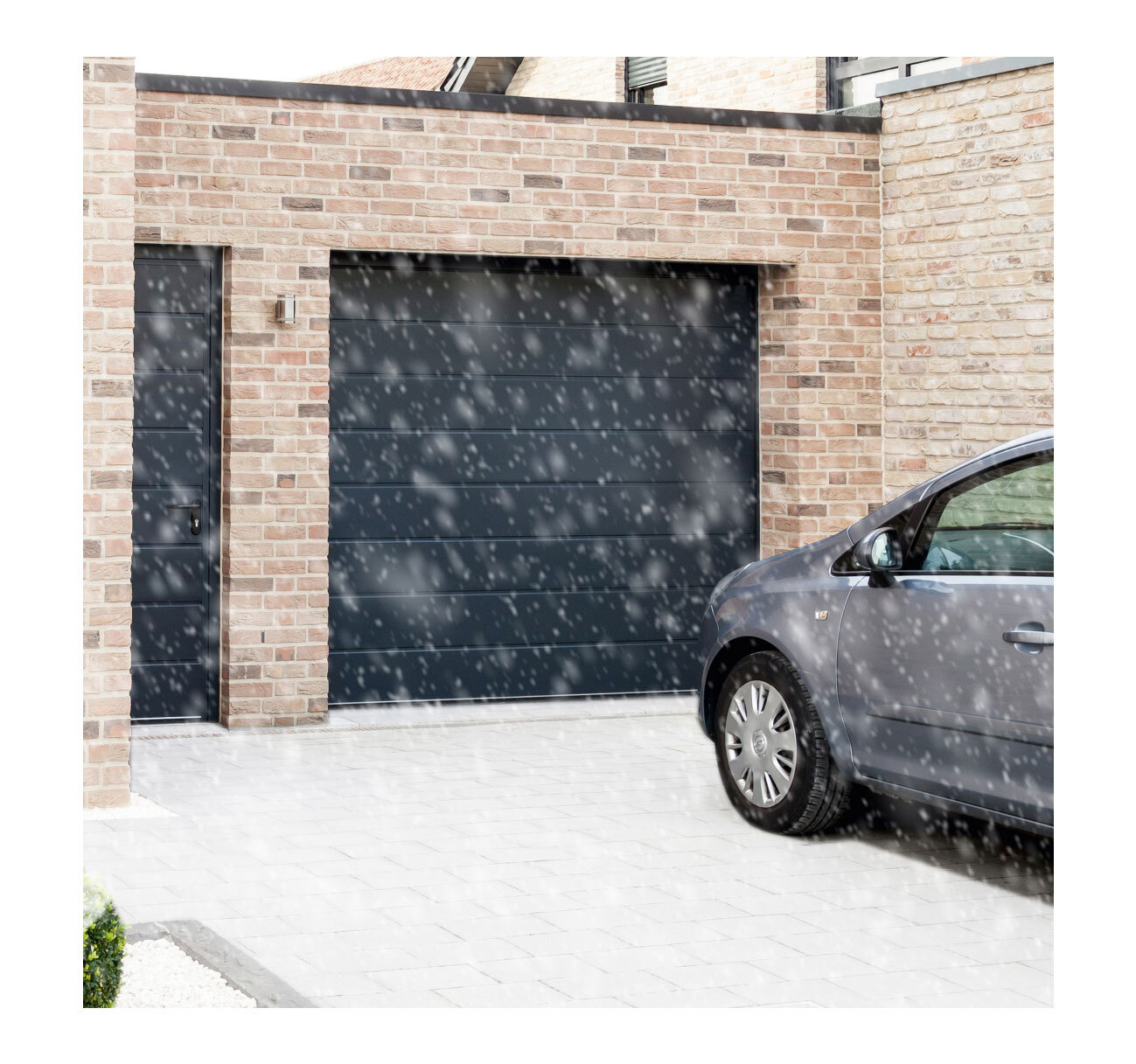

CarTeck sectional garage doors have been tested for thermal performance and have a U value, as a complete door (2500mm x 2125mm in size), of 1.38 W/m2K (3.5 W/m2K for SLX & 3.3 W/m2K for GSA) This is very good for a garage door!
When comparing U values, make sure you are comparing like-for-like. A complete door is different to the panel that a door is made from. The panels our doors are made from have a U value of just 0.56 W/m²K, but this does not reflect the real-world performance, so, make sure, when you compare performance, it’s for a full door not just a panel!
CarTeck side hinged garage doors have been tested for thermal performance and have a U value, as a complete door (3188mm wide x 2359mm in size), of 2.20 W/m2K (2.60 W/m2k for single leaf side hinged personnel doors). This is very good for a garage door!
When comparing U values, make sure you are comparing like-for-like. A complete door is different to the panel that a door is made from. The panels our doors are made from have a U value of just 0.56 W/m²K, but this does not reflect the real-world performance, so, make sure, when you compare performance, it’s for a full door not just a panel!
↑ Click here to go back to the top of the page!
CarTeck sectional and side hinged garage doors and personnel doors do not have an independently tested security rating. They are, however, designed with security as a central requirement.
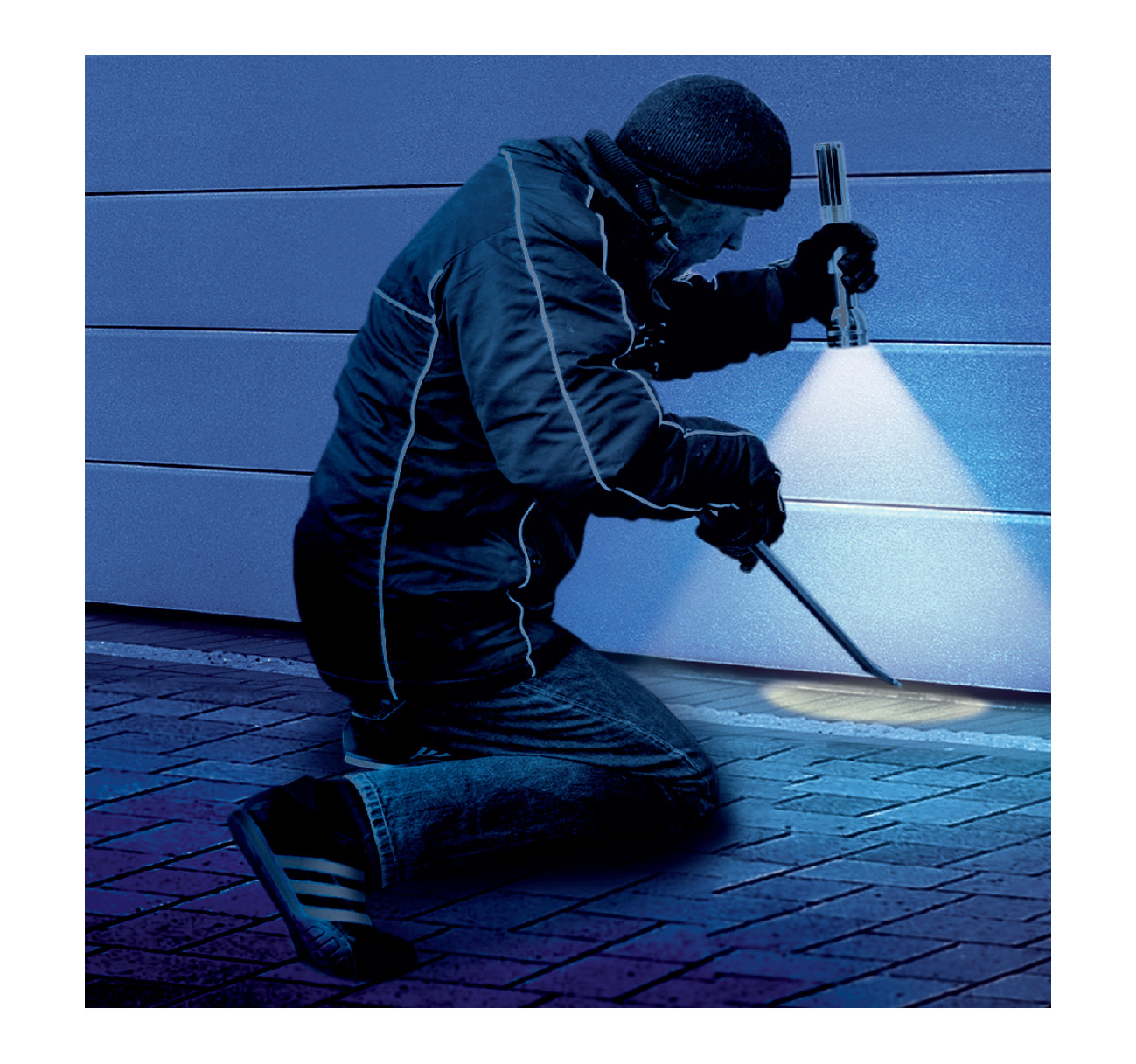

CarTeck Sectional doors are typically automated with the motor and control system providing active security. The opener monitors the door and, if any attempt is made to force the door up, the motor engages and pushes back with a 60kg force.
The CarTeck DRIVE has an additional security option. Add our extra-security pack which has a magnetic motor lock that mechanically locks the motor in any position up to an impressive 300kg of force. The pack also adds an alarm buzzer that recognises a break-in attempt and outputs a loud deterrent signal tone.
Automated doors do not have an external lock handle, which discourages attempts at targeting the lock. Manually locked sectional doors have steel locking bars that engage at both sides of the door and are operated by a locking handle.
When closed, CarTeck Sectional doors are retained in their running tracks by multiple rollers that, in combination with the motor or manual locking rods, present a solid wall- like effect to would-be intruders.
CarTeck side hinged garage doors and personnel doors have a latch and deadbolt that is operated by key externally and a thumb turn internally.
Certified to BS EN1303 Cylinder Security Grade 2, the lock cylinder provides enhanced security and is anti-drill and anti-pick. The cylinder also features a break off system which is designed to prevent the cylinder from being broken by including a ‘sacrificial’ section that breaks off if an attempt to break the cylinder is made, whilst leaving sufficient cylinder remaining to still operate the lock with a key.
Side hinged garage doors also have shoot bolts at the top and bottom of the inactive door leaf edge. These engage into the frame head and threshold to hold the inactive leaf solidly in position.
CarTeck personnel doors and the active leaf on CarTeck side hinged garage doors are available as an option with three-point locking for improved security. The locks provide enhanced strength to combat attempts to force the door leaves or door and frame apart.
↑ Click here to go back to the top of the page!
After the installation has been completed, clean and dry the door thoroughly inside and out with warm soapy water to remove any grease, dust and metal fragments from the door (these will discolour the door finish if left on the door).
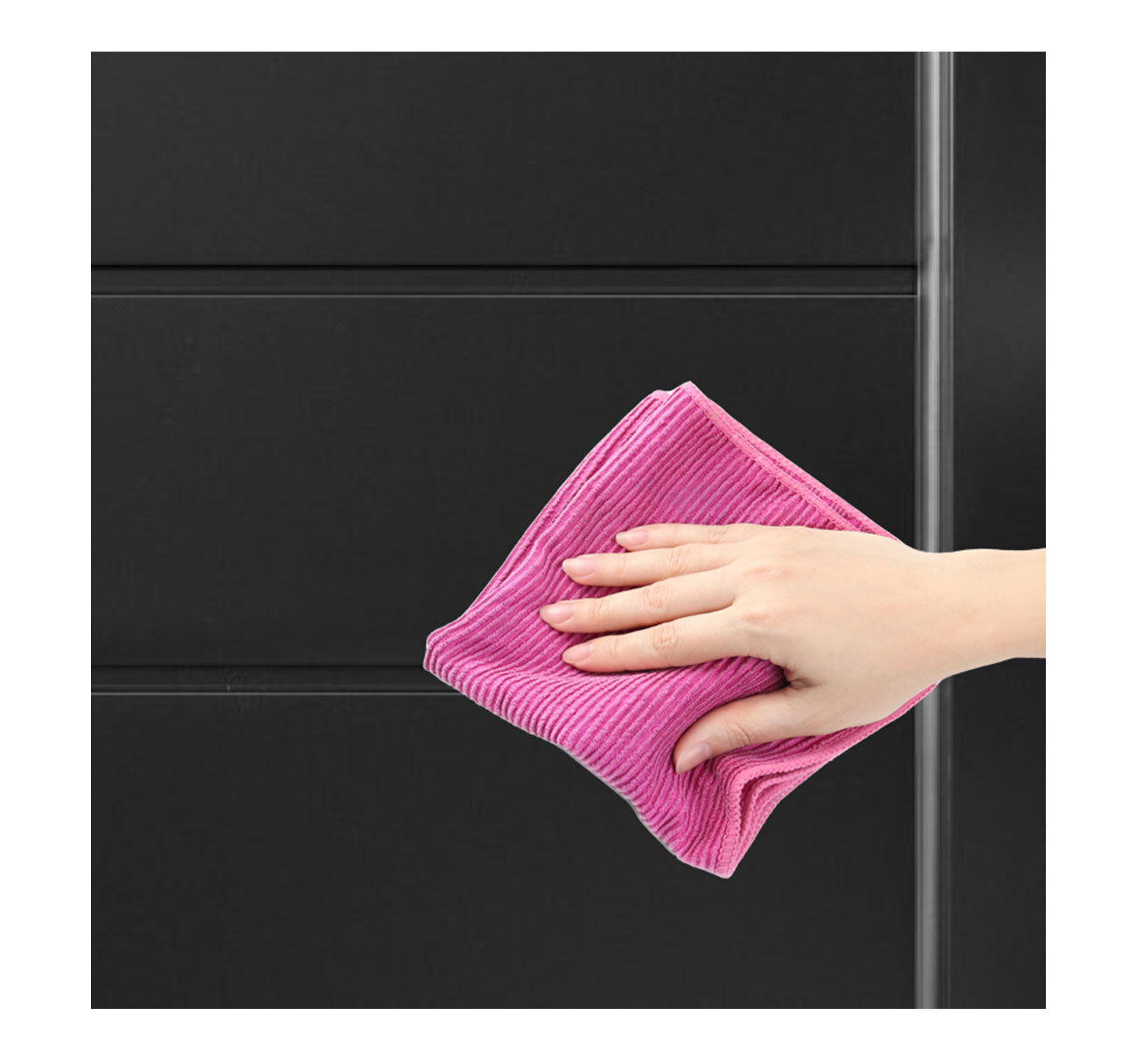

Garage doors are exposed to the elements all year round. Regular cleaning of the door and frame helps prevent excessive soiling that disrupts operation and degrades appearance. Failure to maintain or clean a door accelerates the ageing of a door. On average, a garage door should be cleaned every two months to keep it strong, intact and, of course, well-maintained. Under no circumstances should you wait until the door has stubborn dirt on it, which, under certain circumstances, can no longer be removed.
No caustic, abrasive or corrosive chemicals and substances, flood water, water runoff, or runoff from lead, copper or galvanic metal flashing should be allowed to come into contact with the door. A jet wash must not be used to clean any part of the door. Ash, cement, dust, animal waste, or foreign substances should be removed immediately. Failure to ensure the door is cleaned and maintained as described will invalidate the doors’ warranty. Contaminants that come into contact with the door can contain grains that will oxidise and rust on the surface of the door causing discolouration spots. These rust spot discolourations are not an issue with door door’s finish, but the result of contaminants and not covered under warranty. Issues of this kind can be reduced by regular cleaning.
You need the following tools for cleaning: A clean cloth, clean warm water and some a car shampoo or similar. Caution: If sand has settled on the surface, you should work extra carefully to avoid scratching the paintwork of the garage door. In this case, it is best to work carefully with a garden hose and spray the door with lukewarm water to remove the coarsest dirt. Follow this by thorough cleaning with a cloth. If your garage door has a locking cylinder, it should only be cleaned with care products specifically for cleaning locking cylinders – do not use oil-based agents.
Work with a damp cloth and car shampoo to loosen dirt from garage doors. Aggressive scouring agents or solvents are not to be used, as they can attack the surface and even make it porous.Many garage doors have polymer glazing that gets dirty quickly. It is enough to simply wipe them off. However, if they have already become discoloured, the material can no longer be saved and should be replaced if necessary. To avoid damaging window surfaces, glass cleaner must not be used (due to aggressive ingredients). Never use abrasive cleaners, scrapers or razor blades, etc. Flush with flowing water.Clean with warm water, a small amount of mild plastic cleanser and clean, soft, lint-free rags.
Stainless steel garage door elements are also best cleaned with a clean, lint-free cloth and a mixture of water and car shampoo. However, if the door is heavily soiled, such as stains or limescale deposits, a stainless-steel cleaner - such as that used in the kitchen - should be used. You will achieve the best result if you use distilled water again after cleaning to rinse and then dry the surface. In this way, traces of limescale, which are often caused by hard tap water, are avoided.
Depending on where you live and the salt content of the air, you may need to clean a garage door more often – see the section on coastal locations.
↑ Click here to go back to the top of the page!
Selecting products to install within areas that are affected by the corrosive properties of saltwater needs careful consideration.
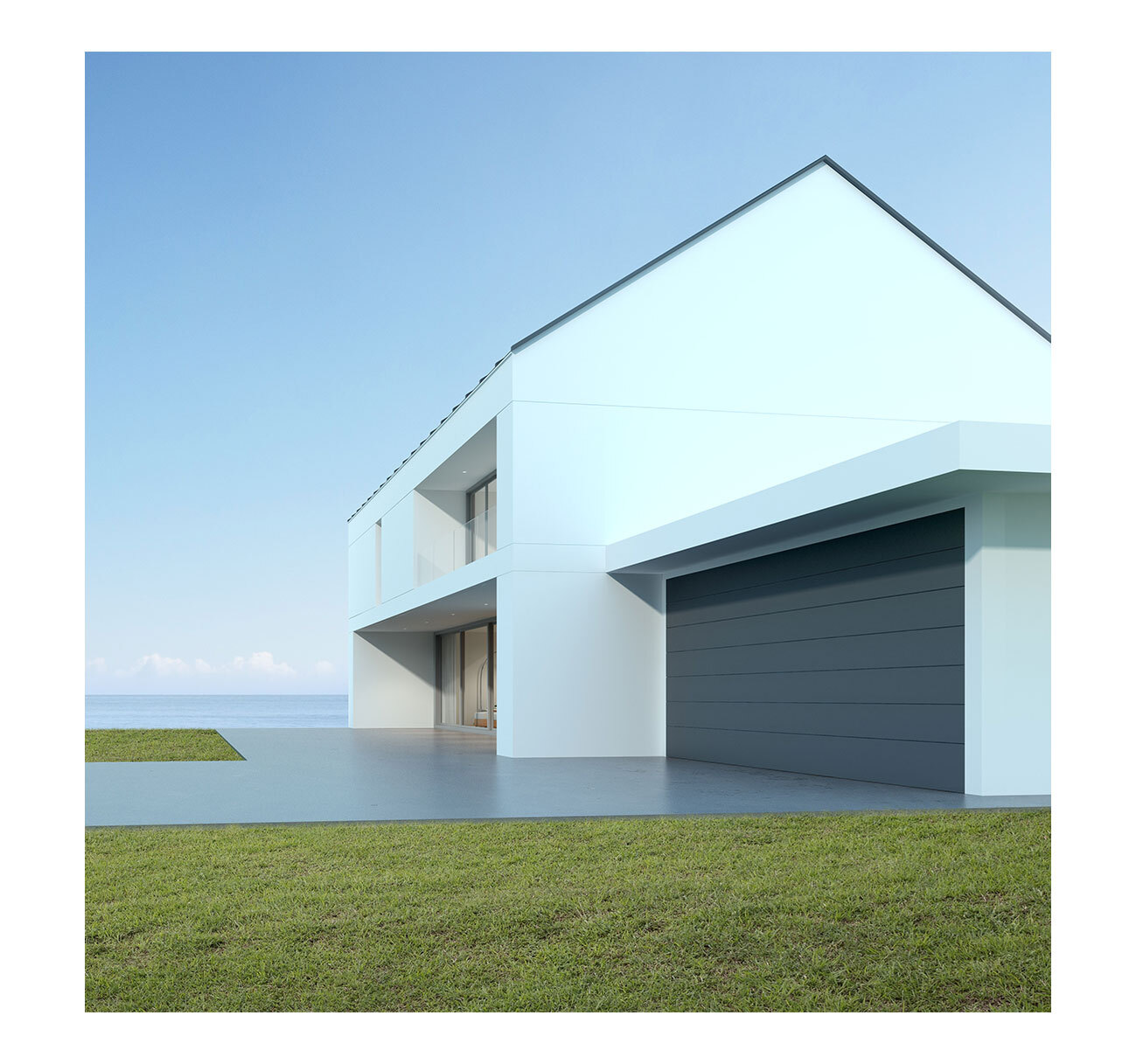

If you live near the sea, an estuary or even brackish water, the destructive capabilities of salt and sand can travel significant distances inland. You must be realistic about the aspect of where your garage door will be installed. It may be several miles inland but still experience wind-borne salts and sand deposits onto the door, exposure to salt-laden damp air inside and outside the garage. Both are capable of significantly accelerating the deterioration of paint finishes and other surfaces of a garage door.
Manufacturer’s warranties exclude coastal areas from their warranty using phrases such as: “The guarantee does not apply to doors that are subjected to extreme conditions, e.g. corrosive influences resulting from use in a coastal climate with high salt content.”
If you are told that a warranty does include coastal areas, we strongly recommend that you request written confirmation of both the duration and the conditions of the warranty – it may just be a salesman’s ploy to secure the sale!
If a Teckentrup door fails because of a quality issue relating to workmanship or a faulty part, Teckentrup will still warrant the door in a coastal area, however if coastal conditions cause sound workmanship and materials to fail, this is outside of the design parameters of the door and is not covered by our warranty. So, yes, Teckentrup warranties exclude coastal areas if environmental factors are the cause of failure but, rather than leave it at that, the following provides sensible guidance on how you can choose Teckentrup and help limit the effects of a coastal environment.
A coastal paint upgrade option for sectional and side hinged door panel fronts and frames is available, providing a 3-year warranty against paint peeling and blistering (normal colour fade excluded) on the external face of the panels only (does not cover staining or bleed from hardware). The usual cleaning, care and other reasonable caveats apply, continue reading for all the detail on mitigation.
Side hinged doors installed in coastal/high salinity environments must be fitted with a 316 Stainless Steel lever handle upgrade or the 3-point locking with CarTeck lever handle option. Doors with standard stainless steel or black handles may experience corrosion of the handle and discolouration of the surrounding door finish. This will be excluded from warranty claims.
To mitigate and reduce the effects of marine influence, a high-frequency cleaning programme is essential. If the door is in an area prone to coastal corrosion from airborne salts and sand, the door should be cleaned monthly or immediately after a weather event.The same applies to caustic substances such as bird droppings. Part opening the door to allow cleaning between sections, rubber seals and along edges is also important, as salt and sand deposited here can also have an abrasive effect in addition to its corrosive qualities – double trouble!
Furthermore, cleaning lifting gear and other metal surfaces inside the garage with a cloth soaked in a light oil, which will help protect your door from corrosion. It must be accepted that salt air is very aggressive and extra care is required.
The paint finishes and protections applied to garage door components are generally effective at delaying corrosion, but all require cleaning, irrespective of location. As a general note, no caustic, abrasive or corrosive chemicals and substances, flood water, water runoff, or runoff from lead, copper or galvanic metal flashing should be allowed to come into contact with the door.
We recommend selecting products that are factory finished using pre-finished steels and aluminium, rather than designed to be finished onsite. Pre-finished coatings often have multiple layers that aid longevity. Sectional garage doors are a good choice, as their surfaces have fewer places to trap salts, are easy to clean and are made from pre-finished components. Our side hinged garage doors are also made from prefinished steel panels and powder coated aluminium frame sections. Roller doors are not recommended as, whilst predominantly made of aluminium, which is good at resisting corrosion, have surfaces that rub together as they operate and can often collect salts in between the slats which is difficult to clean effectively.
In short, pre-finished products, such as sectional and side hinged garage doors, and a strict cleaning regime are the best route to ensure you maximise the life of your garage door in a marine environment.
↑ Click here to go back to the top of the page!
Colour makes for a brighter world! There are a few things about how we colour-coat the various parts of our doors and how to choose a colour that will ensure things go to plan.
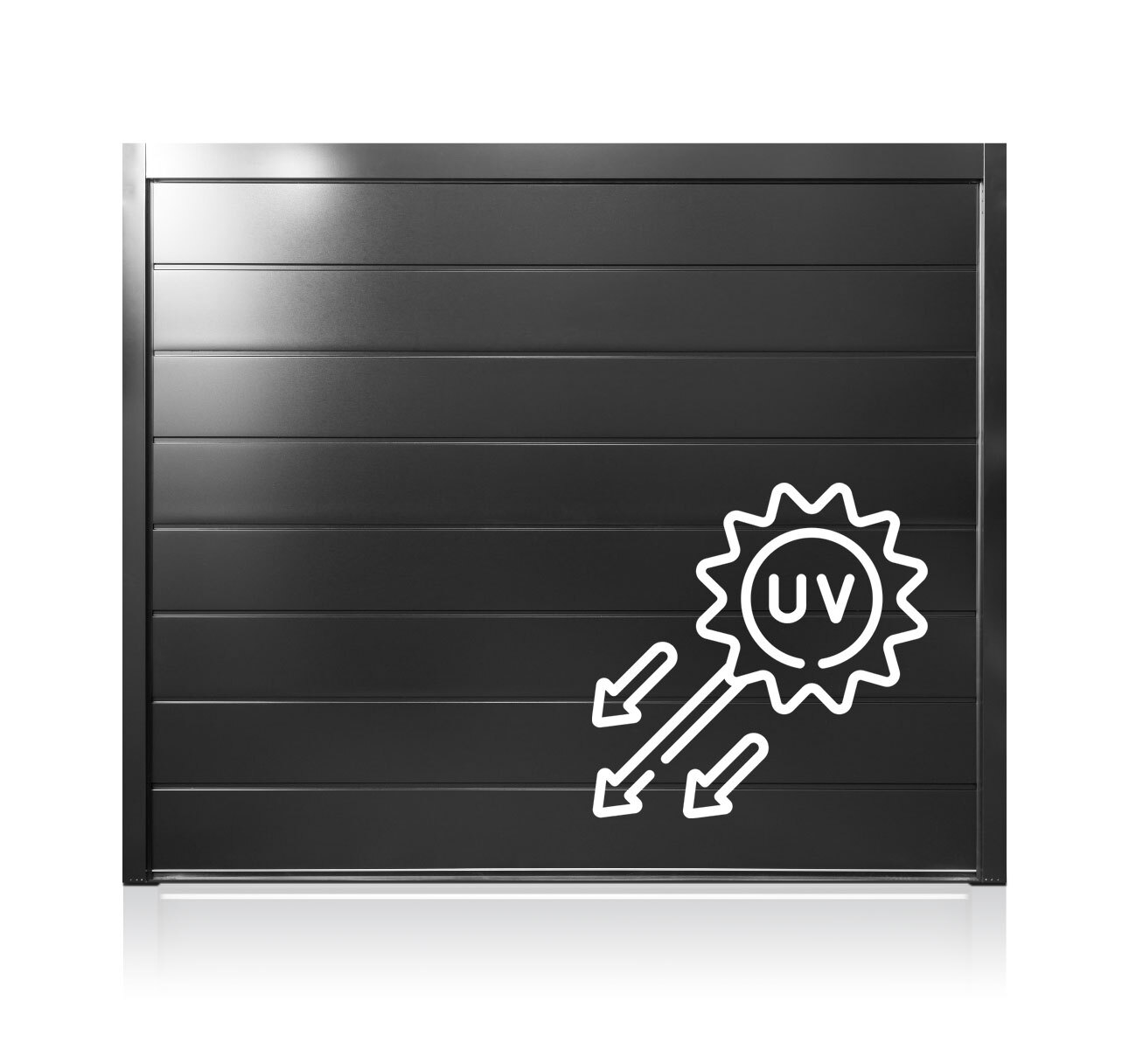

Our Trend doors are made from colour coated steel that has been tested to EN 10169. The test uses accelerated UV exposure to measure the colour fade and gloss retention over time. There are 4 ratings under EN 10169 - Ruv1 to Ruv4, with 4 being the highest rating for UV stability. Our coated steels are rated at Ruv3.
This means, that over the accelerated testing, colour change or fade did not exceed 3% and gloss retention was above 60%. Ruv3 is the same rating you’ll find on many steel roofing systems, so we’re in good company. Notwithstanding the above colours will fade over time. Different coatings will fade at different rates and shade differences may appear between, for example, the frame and door panel, over an extended time period.
Dark colours should be avoided for doors with a sunny aspect. Dark colours will absorb heat from the sun’s rays that can result in differential expansion and bowing of door panels. This can cause binding of the door during operation. The door panels should return to shape when the door cools, however, under prolonged conditions, the deflection may remain.
RAL references for colours are provided as a guide only to the nearest similar RAL colour. Colours will not match to other RAL finishes due to different coating processes, gloss levels, substrates and textures. Similarly, special RAL, BS, wood effects or other colours will not be a precise match. If you are matching to other finishes such as window frames, always request a sample to ensure the colour selected from a brochure or online is as expected. This is particularly important for wood effects such as rosewood, golden oak, night oak or Winchester.
↑ Click here to go back to the top of the page!
The warranty periods only apply to products that have been correctly installed as per the instructions, maintained by a Garage Door Specialist and operated and cleaned in accordance with the requirements set out in the operating and maintenance sections of instructions and labels.
It's a lot to take in, but we hope you agree it's worthwhile setting out in detail the performance you can expect from our doors. Let us know what you think of our honesty page - does it reassure you that we're a company you can trust? email homesales@teckentrup.co.uk with your feedback, we'd love to hear from you.